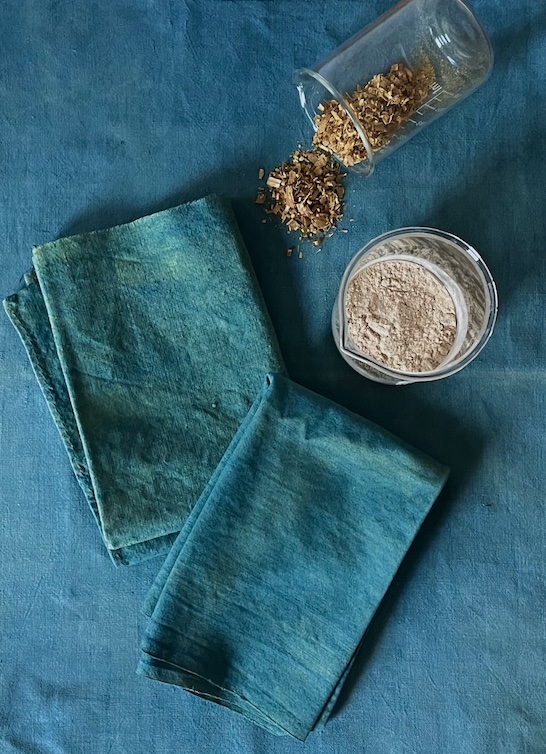We have a new type of Mordant Monday for you today where we dive into the world of Tannins! We want to show you how to use our tannins to mordant, either in combination with aluminum sulfate, to get rich long lasting and substantive color, or to use as a base for color mixing. We will explore our tannins over the next few weeks.

In the photo pictured above we dyed our hemp towel irregulars first in an Indigo Henna Vat. We then used a 15% WOF bath of our osage saw dust to get this beautiful hue.
Osage orange (Maclura pomifora) is native to Arkansas, Oklahoma and Texas but has naturalized throughout many other states. It has a yellow heartwood sometimes streaked with red that makes a bright and lightfast yellow dye. Osage was one of the dyes used to make khaki colored uniforms during the first World War. In addition, it was also used as windbreaks called shelterbelts that held down the soil during the great Dust Bowl of the 1920s and 30s. Osage and other trees made natural fencing in the Great Plains region of the US. Due to its extreme durabilty, osage wood is used to make hunting bows, railroad ties, wagon wheels and fenceposts. The osage tree produces large bumpy fruits called “hedge apples:” these are not edible but contain certain anti-fungal properties from the pigment pomiferin that reduces spoilage.
Our osage orange sawdust has been milled from downed trees. It is a strong dye, producing a very bright yellow on wool with an alum and tartar mordant. When iron is added to the dye bath, the color shifts to moss green. 100g will dye about 500g (1 pound) of fiber a bright yellow. For more instructions, please see our page on how to use osage orange.

I’m going to ask that question that has been asked many times… Should I mordant before the Indigo or after The Indigo but before the Osage orange. I understand that if you mordant before going in the Indigo you risk contamination of your Indigo vat. What do experts say on the subject?
Hi Candace,
We recommend scouring the fabric (if needed), then indigo dipping to the shade you want. Oxidize, rinse and proceed to mordanting. Mordanting can be aluminum potassium sulfate, tannin/alum, aluminum triformate, or aluminum acetate + calcium carbonate. What I understand is that the mordant is weakened by the strong alkalinity of the indigo vat. We’ve used this method for some time now and like the results we get.